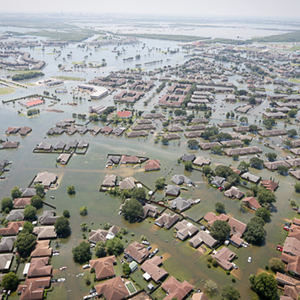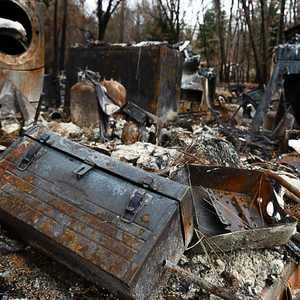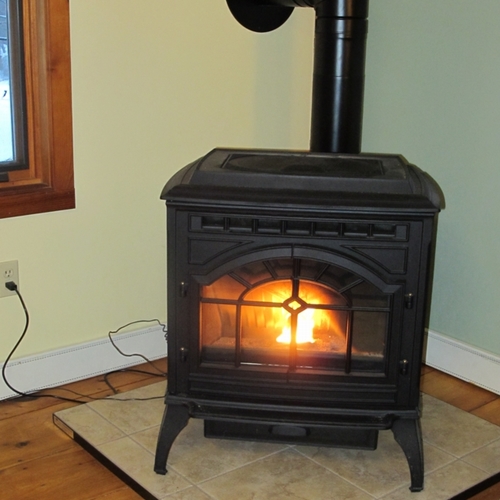
Image Credit: Anatole Burkin
A new report from the National Institute of Building Sciences says that federal hazard mitigation grants that make buildings more resistant to natural disasters such as floods, hurricanes, and wildfires will save the country $6 for every $1 that’s invested.
Further, designing new buildings so that they exceed requirements of 2015 codes developed by the International Code Council can save $4 for every $1 that’s spent, the report said.
Over time, these twin strategies would prevent 600 deaths, 1 million injuries, and 4,000 cases of post-traumatic stress disorder. Designing better-than-code buildings also would result in 87,000 new jobs.
The report was released earlier this month as the National Oceanic and Atmospheric Administration announced that weather and climate disasters in 2017 were the most expensive on record. There were 16 separate events during the year that racked up at least $1 billion in losses, while the total overall was $306 billion — three times the record losses in 2005.
Researchers came to their conclusions after looking at the results of 23 years of federal mitigation grants administered through three federal agencies. Steps included buying or demolishing buildings in flood-prone areas, adding hurricane shutters and tornado safe rooms to houses in risky areas, strengthening buildings for earthquake resistance, and replacing roofs and clearing vegetation around houses in wildfire areas.
A similar study in 2005 showed a 4-for-1 return on mitigation grants from the Federal Emergency Management Agency. The new findings show a benefit-to-cost ratio that’s 50% higher than that, but the new study also included spending by the U.S. Economic Development Administration and the U.S. Department of Housing and Urban Development in addition to FEMA grants.
The 6-to-1 is an aggregate, with spending to prevent some types of damage coming with a better payoff than others. Federally funded measures to lessen damages from river flooding would save $7 for every $1 spent, for example, while earthquake and wildfire grants showed a 3-to-1 benefit-to-cost ratio. Likewise, some states would benefit more than others.
Looking at costs and benefits over a 23-year period, researchers said that total grant costs were $27.4 billion while savings amounted to $157.9 billion.
Steps to help new houses exceed code minimums included building homes higher above base flood elevations than required, making sure that houses comply with hurricane standards published by the Insurance Institute for Business & Home Safety, and requiring that new buildings comply with the 2015 version of the International Wildland Urban Interface Code.
Weekly Newsletter
Get building science and energy efficiency advice, plus special offers, in your inbox.















4 Comments
It's been an uphill battle
I have been pushing for such buildings in my area (high-desert), which poses a wildfire danger. I put my money where my mouth is as I built with ICF/concrete. Finding other homeowners to come on board is difficult. Builders DO NOT like change. They like using familiar materials and methodology. I had to find an ICF contractor that was 120 miles away to do my build.
Not only is my ICF house energy efficient, it's quiet, resistant to rodents & bugs and of course fire resistant. I put StuccoMax stucco on my exterior walls which is fire resistant with zero smoke spread. I then used a Class A standing seam metal roof and wrapped the soffits and fascia with the metal. No exposed wood at all.
I wish more people would get on board. Think about all the waste and greenhouse gases when thousands of homes get destroyed, then have to be cleared into landfills. Then these thousands of homes have to be rebuilt which adds to the whole greenhouse effect (materials, trucks, etc). Only to burn again and the whole process starts over. It's madness to really think about it. Build a wood frame home, let it burn, rebuild again with wood and wait for the next fire.
I remember when wildfires
Peter,
I remember when wildfires scorched canyons around LA years ago, one house owned by a Vietnamese immigrant survived, built like yours to survive wildfires. Many people were impressed, but it seems few adopted resilient building practices.
Do you get any discount on your homeowners/fire insurance? Do you have an estimate of the cost of your upgraded construction? Obviously other advantages besides fire resistance. Can you quantify energy savings payback? Are there specific standards or recommendations that you used or could recommend?
Peter L
I'd be really interested in some annotated pictures of the strategies you used.
Robert
I did get a homeowners fire insurance discount. They listed the structure as masonry walls with a Class A fire resistant metal roof. The synthetic StuccoMax stucco exterior was also listed as fire resistant.
The costs to construct a similar wood frame wall, with true R-21 walls (no thermal bridging with ICF), exterior rigid foam and interior cellulose insulation, was about similar priced to the ICF walls. One has to take into account the wood framing, OSB sheathing, Simpson strapping, rigid foam exterior insulation and interior cellulose filled walls, all the labor, to get a true apples to apples comparison when comparing to ICF.
The ICF walls are 11" thick (2.5" foam + 6" rebar reinforced concrete @3,500 psi + 2.5" foam).
Since I am in a high-desert climate, the diurnal swings can go from 70F in the day to 20F at night. The ICF walls do a really good job in moderating the swings.
It is by-far the quietest house I have ever lived in and the most energy efficient also. Even with 60mph winds in the summer storms. The walls are dead silent. The other wood frame homes I have lived in always made noises in such high winds.
Log in or create an account to post a comment.
Sign up Log in